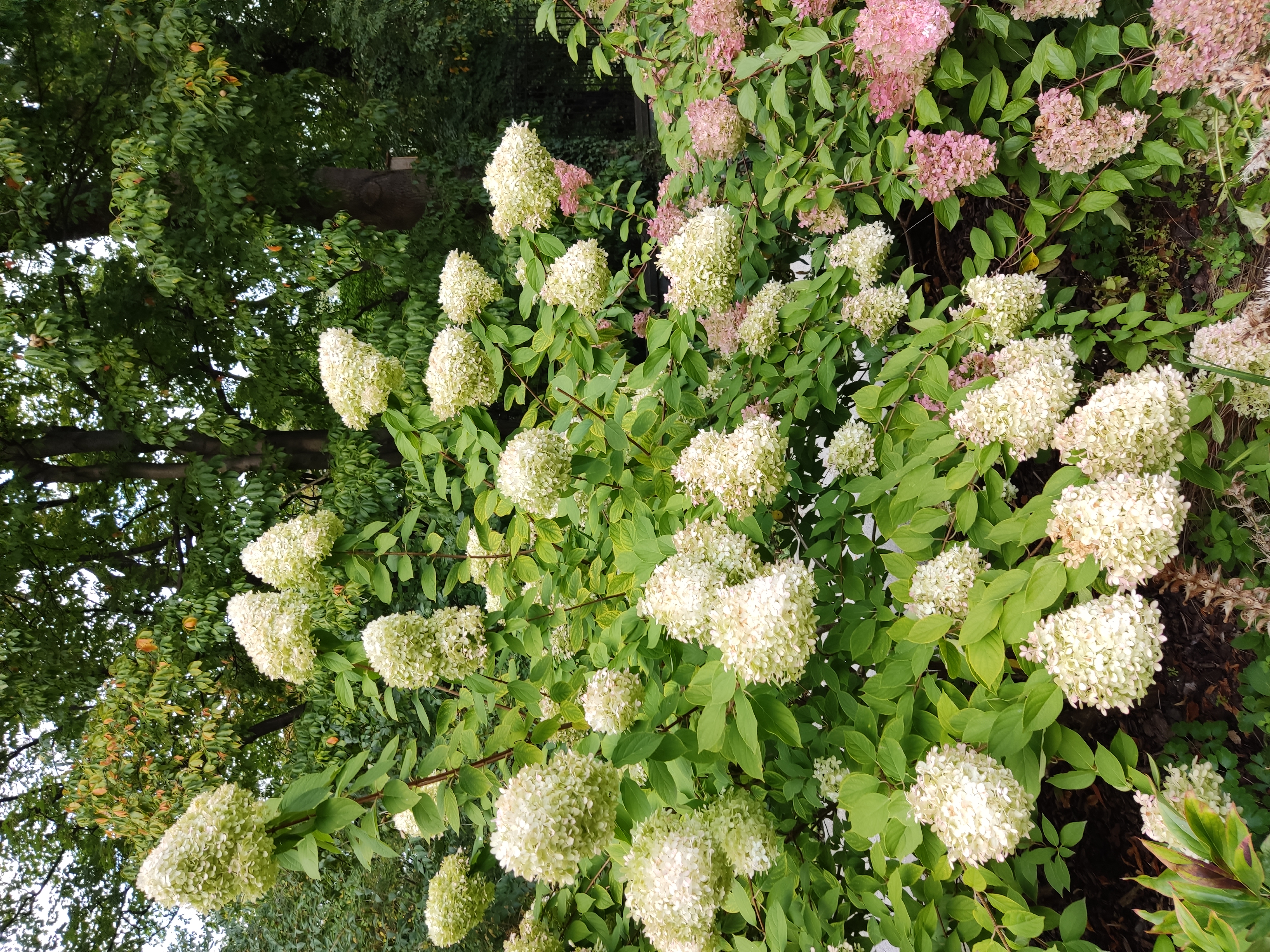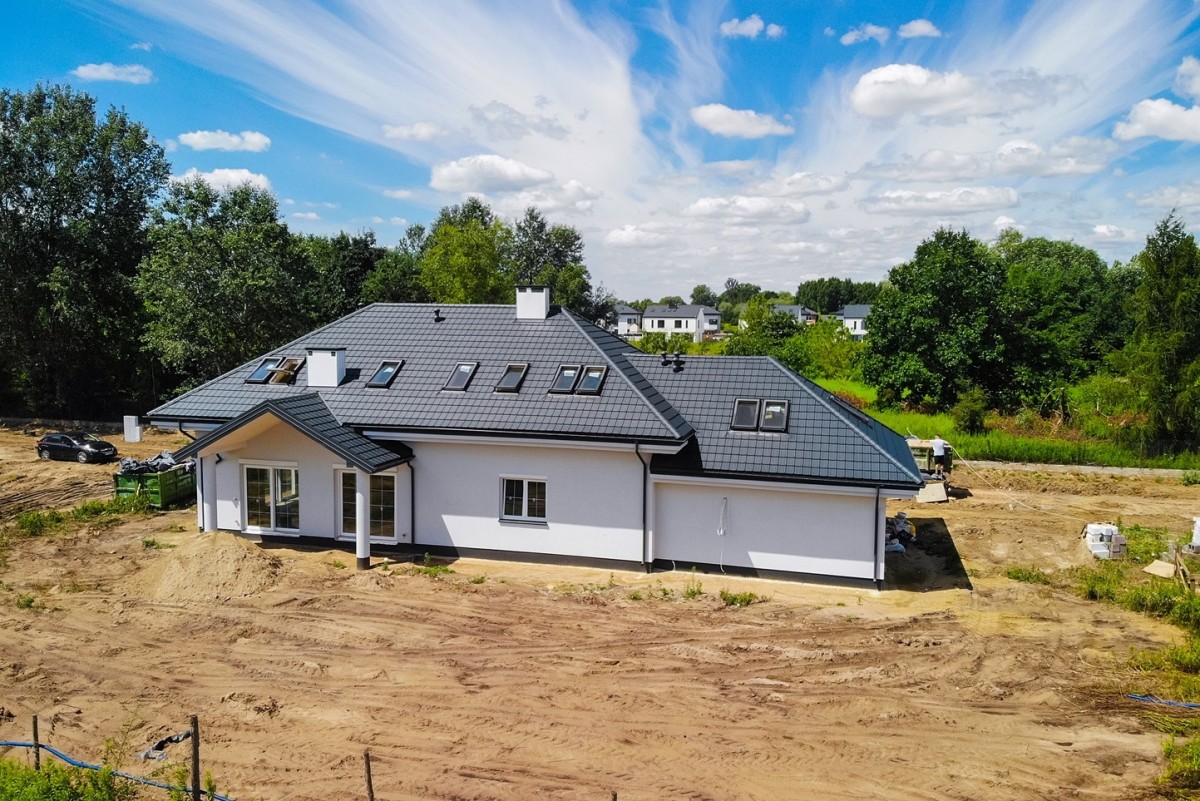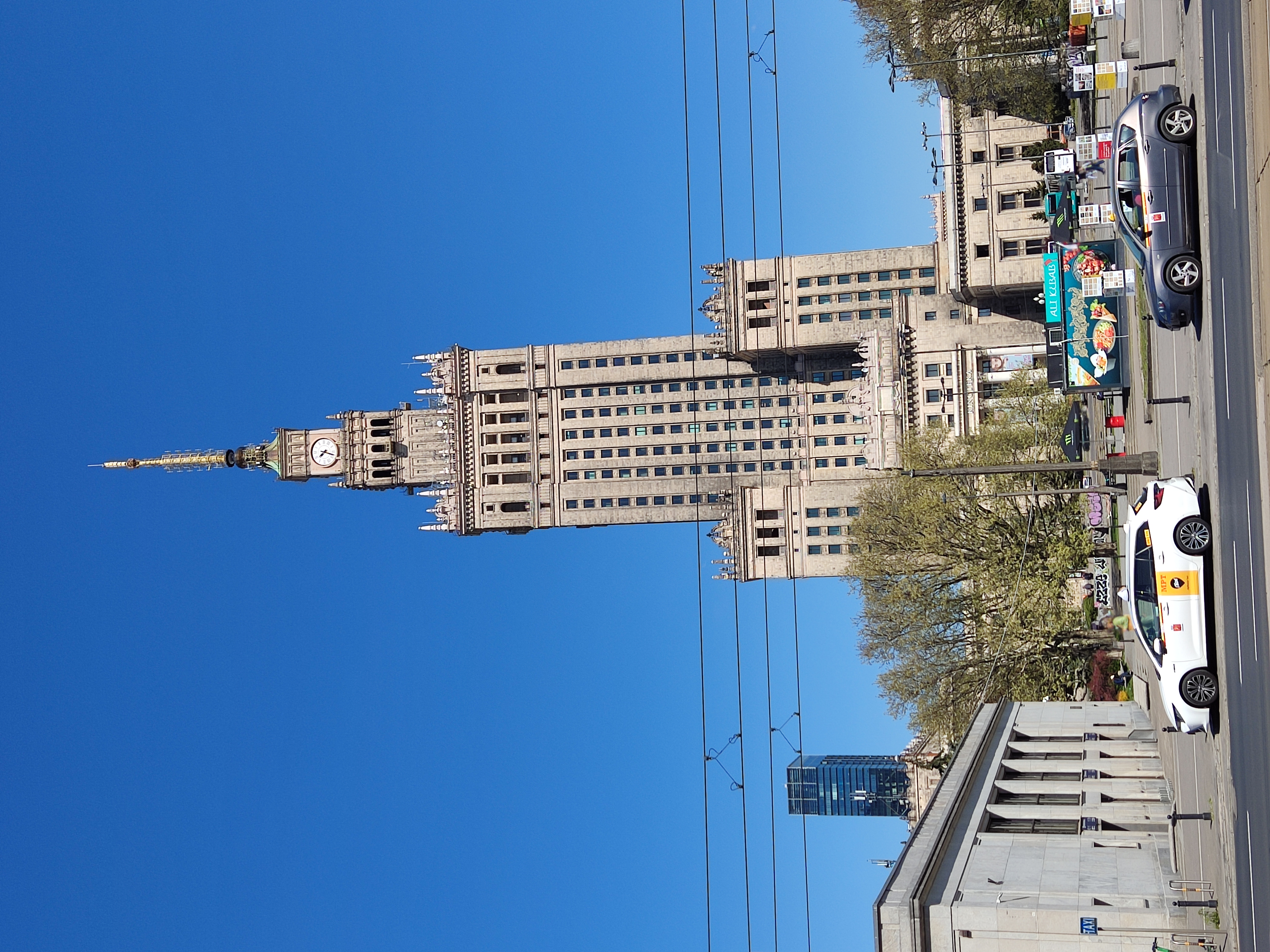Łomianki

Łomianki
1. Basic information about the city of Łomianki
2. Sports and recreation in Łomiankach
3. Culture in Łomiankach
4. Education in Łomiankach
5. Transport in Łomiankach
6. Nature in Łomiankach
7. Ecology in Łomiankach
8. History of the city of Łomianki
Lomianki is a city in Poland, part of the Masovian Voivodeship, West Warsaw County. It has the status of an urban-rural commune. It occupies an area of 8.4 km². As of January 1, 2020, 17,042 people lived in the city. It is part of the Warsaw agglomeration.
The city of Łomianki is located near Warsaw, 15 km from the center of the capital, in Powiecie Warszawskim-Zachodnim, in the buffer zone of the Kampinoskiego Parku Narodowego nature reserve, in the oxbow lake of the Vistula River, on Lake Dziekanowskim and Lake Kiełpińskim.
The town and commune of Łomianki adjoin the commune of Czosnów from the west, the commune of Izabelin and Kampinoskim Parkiem Narodowym from the south, and the Bielany district of the capital of Warsaw from the southeast. From the northeast, across the Vistula River, it borders on the cities of Jabłonna and Rajszew, which belong to the commune of Jabłonna.
This is a great area for lovers of nature, walks and outdoor activities.
The location of the city is an undoubted advantage both for those who have chosen Łomianki as their small homeland, and for tourists. This is the perfect place to spend your free time. Throughout the year, the city itself is full of life, and on its outskirts you can simply be closer to nature, although in a moment you can return to the capital. Residents and guests will always find something for themselves here, regardless of their interests and seasons. In addition to Kampinosem and lakes, Łomiankach has a well-developed sports infrastructure (sports fields, halls, tennis courts, swimming pool, skating rink, rope park, stables).
On weekends, the city hosts a varied cultural and entertainment offer for children and adults. In summer there is an open-air stage, a number of cyclical sports events (bike ride, Ireny Szewińskiej run), evening dance evenings, art workshops.
Cafes and atmospheric restaurants invite you to delicious meetings with loved ones, as well as homemade dinners and quick lunches. Local entrepreneurs produce products that have received recognition in the world. Wonderful tinctures, jams, honey, chocolate, beautiful sculptures, ceramics, paintings.
It is not surprising that many artists, actors, musicians and athletes have chosen this area as their place of residence.
The city of Łomianki includes the following settlements: Buraków, Dąbrowa Leśna, Dąbrowa Rajska, Dąbrowa Zachodnia, Łomianki Baczyńskiego, Łomianki Centralne, Łomianki Górne, Łomianki Majowe, Łomianki Pawłowo, Łomianki Powstańc ów, Łomianki Prochownia, Łomianki Równoległa, Łomianki Stare, Łomianki Trylogia, Lomianki Fabryczne.
2. Sports and recreation in Łomiankach
Łomianki can boast of rich offers for recreation and sports. This is a real find for those who like to actively spend their free time.
The proximity of the Kampin National Park allows you to enjoy the benefits of nature. Numerous hiking trails make it possible to take long walks, boat trips and bike rides. Numerous sports facilities such as sports fields, gyms and clubs, rope park, swimming pool and playgrounds provide entertainment for children and adults.
Horse riding enthusiasts can choose from several stud farms, while tennis players can play matches on well-prepared courts.
In winter, Łomianki is also waiting for fans of speed skating. Every year, the ICDS indoor skating rink invites everyone to have great fun.
In Łomiankach there is an Integracyjne Centrum Dydaktyczno-Sportowe im. Jana Pawła II (ICDS) - Integration Center for Training and Sports. John Paul II (ICDS). The building has a swimming pool, a gym, a shooting gallery, a sauna, a gym and a concert hall where concerts and events for children are held, just like in the House of Culture. Various sports events are organized in the hall, such as the Polish Wheelchair Dance Cup, the Warsaw Ballroom Dance Championship, the Polish Karate Championship, etc.
There are such sports clubs in the city as "Łomianki" Sports Club, Oyama Karate, UKS, "FIDES" Club, "SWING" Dance Center, "KiM" Leisure Promotion Foundation, Łomianki Volleyball Academy Association, Football Academy, Yacht Club, Tennis Frajda Club, Art Gallery and Dance House "Koko Art".
The city also has a women's basketball team, Arcus SMS Łomianki, which has been promoted to the big leagues
3. Culture in Łomiankach
The main cultural institutions in Łomiankach are the Public Library and the House of Culture.
The public library in Łomiankach was established in 1947. It has two branches in Dziekanowie Nowym and Dąbrowie Leśnej. The library functions as a cultural center (organizes meetings with authors, reading fairy tales aloud, animation and literary workshops, literary competitions and film screenings) and an information center (offers free Internet access and a rich book collection).
Łomiankach has a House of Culture (Łomianki Stare) and its branch (Buraków), where cultural and gymnastic classes are held. Every child can find something for themselves (eg Łomianeczki dance group, art club, etc.). It also organizes classes for adults. The House of Culture hosts musical concerts, theaters for children, meetings with book authors, carnival balls, the finale of the Big Orchestra of Christmas Mercy.
Many years ago, Lomianki conquered several recognized artists with their landscapes. They settled in the Dąbrowa region and to this day they live here and create their works here.
It was they who laid the foundation for artistic life in a place where people were mainly engaged in agriculture. Here they found a place to work and rest.
Today, successive generations of artists live and create their works here, who willingly share their hobbies with residents and tourists.
During the summer they open their houses and gardens to visitors. They produce artistic household and architectural ceramics, sculptures, paintings, tapestries and collages. Łomiankach combines modern art with classical art.
It is a great joy to live among such talented people, sensitive to art and other people.
Monuments in Łomiankach
The following are included in the register of immovable monuments in the city:
villa with garden, st. Racławicka 15, beg. 20th century; (Łomianki)
villa with garden, st. Dolna 41; (Dąbrowa Leśna)
villa, tree with garden, st. Pionierów 22, 1927; (Dąbrowa Leśna)
Local press is published in Łomiankach - a free bi-weekly newspaper "Gazeta Łmiankowska.pl" and an independent monthly "Łomianki.Info" published on the website www.lomianki.info.
4. Education in Łomiankach
There are 10 kindergartens in Lomianki. Of these - 2 municipal, 8 - private, including one bilingual - Polish-English private kindergarten.
There are 11 schools in the city. Of these, 1 is a state secondary (Publiczne Liceum Ogólnokształcące im. Karola Wojtyły), 10 are private. Private schools include one secondary (Niepubliczne Liceum Ogólnokształcące Nr 71), one gymnasium (Gimnazjum nr 1 im. Janusza Kusocińskiego), as well as
6 primary schools. The two primary schools are bilingual.
Also in the city there is the Polish Basketball Association Sports Championship School and the Non-State Music School with the status of a state arts school.
There are 2 colleges in Lomianki - Faculty of Family Studies UKSW and Higher School - New Education.
5. Transport in Łomiankach
From January 1, 2018, Łomianki are included in the first ZTM Warszawa ticket zone. Currently, 5 bus lines operate in Lomianki, connecting different parts of the city with Warsaw, including Metro Marymont and Metro Młociny. In addition, there is a bus to Starostwo Powiatowe (Ożarów Maz.)
There are also 3 local municipal lines. Rides on these lines are free.
In addition, PKS Polonus buses run through Łomianki in the direction of Warszawy, Czosnów communes, Zakroczym, Leoncin and Nowego Dworu Maz.
During the summer season, the Łomianek walking and cycling ferry also runs periodically from the Warsaw Białołęką.
6. Nature in Łomiankach
The city and commune of Łomianki, due to their location in the buffer zone of Kampinoskiego Parku Narodowego (KPN) and in the oxbow lake of the Vistula River, are characterized by unique natural, tourist and recreational values. A significant part of Lomianki is located in the floodplain of the old river Vistula, where three of the six lakes are located: Pawłowskie, Fabryczne and Ostrowskie.
Today, tourist-attractive territories are being developed here, so that the area becomes a holiday destination for residents and Varsovians, as well as a place of transit tourism on the north-south communication route, which consists of a series of lakes connected by a natural watercourse flowing among fields, meadows and local forests. arrays. The largest of them are lakes: Dziekanowskie and Kiełpińskie (waterfowl reserve). The development of the Dziekanowskiego lake area in terms of tourism and recreation will create an opportunity for the economic development of the city and commune.
Łomianki is a very good starting point in Kampinoski Park Narodowy (Kampinos National Park) (entrance from Trasy Gdańskiej to Dąbrowy Leśnej or Dziekanowa Leśnego - near Szpitala Dziecięcego). It is a very attractive area with numerous walking and cycling trails. In the car parks located on the outskirts of KPN, in the area of st. Kampinoskiej and Szpitala Dziecięcego in Dziekanowie Leśnym, hiking trails start, incl. main forest trail. Nearby sheds provide family picnics and fun games.
Natural, cultural and tourist values of Kampinoskiego Parku Narodowego:
KPN was established in 1959 and in 2000, due to its natural values and social significance, it was recognized by UNESCO as a World Biosphere Reserve under the name "Puszcza Kampinoska". The area of the park is 38,544 ha (including 68 ha in the Bison Breeding Center in Smardzewicach). A characteristic feature of the park is a wide variety of plant communities, from alder to glowing oak, from peat bogs and sedge to heat-loving sandy meadows. Forest complexes, including pine ones, predominate. Many rare plant species grow here, including 61 legally protected species, bay leaf and lei. The largest of the mammals is the elk, which is the symbol of the Kampinoskiego Parku Narodowego.
Tourist attractions of Kampinoskiego Parku Narodowego:
Landscape of contrasting dunes and swamps,
The pristine nature of some areas of the forest with fallen trees and areas of strict protection,
Historical trees, which are mostly natural monuments,
Sites of national memory: rebel graves, cemeteries, places of martyrdom during the war,
Monuments of architecture located in the protected zone of the park,
In the buffer zone of the park are: the Museum of the narrow-gauge railway and the Ziemi Sochaczewskiej Museum and the Battlefield on the river Bzurą w Sochaczewie, Frederic Chopin's birthplace in Żelazowej Woli.
In the park, you can walk along the hiking trails (350 km in total) or ride the 200 km bike path. Equestrian tourism appears. There are riding lessons for beginners and training for advanced riders, there are also hotels for horses. Their services are used not only by local horse riding enthusiasts, but also by residents of Warsaw.
7. Ecology in Łomiankach
Residents of the city are trying to change their lifestyle to a more environmentally friendly one in order to support nature and the natural environment. There is a growing public awareness of environmental issues. More and more people are starting to feel the effects of air pollution, waste overproduction or global warming. Many events in the field of air and microclimate protection are carried out in Lomianki.
Among them:
- Community Water Harvesting Program - residents apply for reimbursement for the purchase and installation of above-ground rainwater tanks and the construction of home rain gardens.
- The Community Stoves Replacement Program is a targeted subsidy to co-finance the costs of replacing heat sources as part of the “low emissions” reduction.
- Municipal program for the removal of asbestos.
- Air quality monitoring - The Municipal Police conducts home fire checks and imposes fines for violations of the rules.
- Installation of solar installations in households within the framework of the project "Environmental partnership - the integrated use of renewable energy sources to improve the energy security of the commune Łomianki". Funding from the European Union under the European Regional Development Fund.
- Systematic replacement of the KMŁ bus fleet with electric buses. Co-financing of the National Fund for Environmental Protection and Water Management (NFOŚiGW).
- Development of an Electromobility Development Strategy (project co-financed by the National Fund for Environmental Protection and Water Resources).
- Work on the Municipal Climate Change Adaptation Plan for the commune Łomianki.
- Consistent modernization of obsolete street lighting, replacement of lamps with energy-saving ones.
Conducted educational campaigns:
- "Leave it dry!" – a reminder how to use less water.
- "Reduce-Reuse-Reclaim" - practical tips to reduce waste generation.
Educational ecological activity:
- The local newspaper BIUM is published on ecological paper.
- Ecoguide in BIUM - we suggest how to reduce the amount of chemical cleaning products at home, how to replace them and how to take care of the garden in an environmentally friendly way.
- Ecological picnics - promotion of ecological lifestyle.
- Ecological gadgets - rejection of plastic toys.
- Exchange of electronic waste for seedlings of flowers and herbs.
- Flower meadow in ICDS.
- Welcome packs for residents - linen bags for vegetables, cotton shopping bags.
- Contracts with non-governmental organizations obliging the contractor to use only recyclable materials.
- Collect plastic caps from drinks and donate them to charity
8. History of the city of Łomianki
Łomianki comes from the words: łominy, łomna, which means places with trees brought by the river overflow, or plains after deforestation.
The beginning of settlements in this area dates back to the 10th-11th centuries. It was here that the communication route passed, connecting the first two capitals of Mazovia: Płock and Czersk. It started from the villages of Jazdów and Solec and went through Łomianki to Łomny. This oldest village, together with Czosnowem, belonged between the 12th and 14th centuries to the Carmelites of Czerwińskim, and later was an episcopal town. From Łomny the path led to Zakroczym, and then forded across the Vistula River to Wyszogrodu and to Płocka. Much later, on the border of fields and forests, the villages of Palmiry, Sadowa and Dziekanów Niemiecki were formed (for the first time on the map of 1889-91 in the form of single buildings). Kiełpińska colony on the Vistula was marked on the map a little earlier, in 1843, and the village of Borakowo (the name comes from boron, not beets) already in the 16th century.
The life of local residents was connected with the Vistula River. They enjoyed fertile soils and beautiful meadows, but they were also subject to numerous floods in the years: 1774, 1813, 1844, 1888/89, 1924 (the Vistula flooded, flooding the lower terrace and the village of Kiełpin), 1940 and 1958. New dams erected in late 1950s, stopped further flooding.
At the beginning of the 19th century, two small rivers flowed through the territory of the commune (today only one flows). The location and shape of the oxbow lakes are quite stable. The oldest and latest maps show the following lakes: Dziekanowskie and Kiełpińskie, as well as a group of small lakes north of Łomianok, which later turned into wet meadows. Lake Dziekanowskie was artificially impounded, increased its surface and changed its shape as a result of the construction of dams.
Gradually, the meadows were reduced, and the area of arable fields increased. The forests were completely destroyed in the area of Dąbrowy and Dąbrowy Leśnej. They were carved in 1830-1930. The former alluvial and oak-hornbeam forests that occupied the Vistula floodplain disappeared as a result of logging.
Only small fragments of more than 100 years old forest (now Kampinoski Park Narodowy) remain in the commune. In addition to agriculture and flooding, the production of charcoal has become the cause of the disappearance of forests.
The oldest settlement still inhabited is probably Kiełpin with an ancient burial mound and an old cemetery. In 1461, the then owners of the village - the Kiełpińscy family of the Rogala coat of arms - founded a larch chapel, where today there is a memorial chapel.
In the Middle Ages, most of the surrounding area belonged to the Dukes of Mazovia and their henchmen, until 1526, when the princely part became the property of King Zygmunta Augusta. As a result of donations, the church also had its own possessions here, as evidenced by the names that have survived to this day: Kiełpin Poduchowny, Dziekanów, Dziekanówek. At the turn of the 15th and 16th centuries, the Dutch and Germans settled in the area of the former Vistula bed - hence the names: Dziekanów Niemiecki and Kazuń Niemiecki. The property (later referred to as młocińskie) was repeatedly divided, sold or rented.
During the reign of Zygmunta Starego, Queen Bona founded a network of flourishing mills in Burakowie, Młocinach and the surrounding area. At the beginning of the 16th century, the southern part of the land (Łomianki) belonged to the Warsaw headman, and all Młociny belonged to the sons of Matyjaska from Młocin, who then sold it to the innkeeper Maciejowi Chmielowi from Młocin. Most of the territory of today's commune belonged to the parish of Kiełpin, which had 900 inhabitants in 1603.
The northern part of the commune, the former church property, belonged to the secular Roszczeborskich family from the middle of the sixteenth century. During the time of Władysława IV, the owner of Łomianek and its surroundings was the royal chancellor Jerzy Ossoliński. In 1636, the headman of Warsaw, Krzysztof Sobek, became the owner of Młocin and Borakowa.
During the Swedish invasion and defense of Warsaw, these areas were completely burned and most of their inhabitants were killed. The development of these territories took place during the reign of Augusta III, whose minister Brühl built an imposing residence at Młocinach, and his son Fryderyk founded a cannonball foundry and gunpowder factory (later the Gunpowder House).
At the end of the 18th century, Jerzy Fryderyk Poths became the owner of the młocińskich and łomiankowskich estates. After him, the estate was inherited by his younger brother Henryk Filip, who, in turn, transferred the Młociny b Łomianki estates to his son Henrykowi in 1820. Shortly before the November Uprising, Antoni Trębicki, tenant of the dziekanowskich estate, developed agriculture by founding an agricultural implement factory in nearby Łomnie and an Agricultural Institute in Marymoncie.
In the early 20th century, many small industries and crafts were established.
Before World War II, Łomianki formed part of the commune Młociny, after the annexation of Młocin to Warsaw, they became an independent rural commune of Łomianki.
The Second World War:
Until 1939, the head of the Młociny commune (to which the Łomianki belonged) was Antoni Bogdański, who was arrested during the war and shot in Auschwitz. He left 2,500 soldiers in the Kiełpinie barracks who died in September 1939. The attack of the Jazzłowieckich Lancers by General Romana Abrahama, known as the attack on Wólką Węglową, was an episode lasting only a few minutes, but is considered one of the most beautiful pages of the Polish Army of the 1939 war in Dąbrowy Leśnej and its immediate surroundings on September 19, 1939. On September 22, Polish troops , retreating after the battle on the Bzura, tried to break through to Warsaw. In bloody battles, especially in the area of the church in Łomiankach, many soldiers and their commander, General Mikołaj Bołtuć, died. Today, one of the streets in Łomiankach bears his name, and in the center of the city there is a monument dedicated to his memory.
The territory of the current commune Łomianki was part of the 8th district of the Home Army. Shortly before the start of the Warsaw Uprising, the local units of the Home Army and those that ended up in Puszczy Kampinoskiej as part of Operation Tempest formed GRUPĘ KAMPINOS, which was a serious support for the fighting Warsaw.
An important event that made the decision to create Grupy Kampinos was the inclusion of the well-armed and organized partisan detachments Zgrupowania Stołpecko - Nalibockiego Okręgu Nowogródzkiego AK, led by Lieutenant Adolf Pilch, into the troops of the VIII region. These units, having experience in partisan warfare against two occupiers while protecting the Polish population of the eastern outskirts of the Republic of Poland, arrived in Polish uniforms with full armament.
During the Warsaw Uprising, an American plane was shot down over Warsaw while delivering aid to the rebels. the so-called flying fortress, one of more than 100 aircraft that helped the Warsaw insurgents. Of the crew of 10 people, 8 soldiers died and two were captured by the Germans (after being released from captivity, they returned to the United States). B17 crashed at Dziekanowie Leśnym. Łomiankach honored the memory of American soldiers who helped. At the cemetery in Kiełpinie there is a Memorial to American Pilots. Hence the connection between Łomianek and the American city of Columbia Heights, where one of the pilots comes from.
Post-war years:
In 1955, Młocin was annexed to Warsaw, and the regional national council was transferred from Młocina do Łomianek. The commune Łomianki was created, with the simultaneous separation of Burakowa as an independent administrative unit. The branch of Burakowa lasted no more than 5 years.
In 1955–1972, the village belonged to and was the seat of the authorities of the Łomianki commune. Until 1975, it belonged to the Novodvorsky district.
In 1975–1998, the city administratively belonged to the Warsaw Voivodeship.
The post-war years brought further economic development, which led to the granting of city rights to Łomiankom on January 1, 1989.
By a decree of November 17, 1988, the Council of State established the city of Łomianki in the Warsaw Voivodeship. The city of Łomianki included:
1. village Łomianki Górne, area 182.66 ha
2. Burakow village, area 114.06 ha
3. the village of Dąbrowa, with an area of 360.18 ha.
4. village Kiełpin Poduchowny, area 6.01 ha
5. Łomianki village, area 116.07 ha
6. Łomianki Dolne village, area 37.02 ha
In June 1990, the first democratic elections to the City and Commune Council were held.
Blog


Cost of maintaining and operating a house in Poland
Cost of maintaining and operating a house in Poland

The first skyscrapers in Warsaw
Among the first skyscrapers in Warsaw are the following 3 high-rise buildings (PAST building, 1910, height 51.5 m; Hotel Warszawa 1933, 66 m; Palace of Culture and Science 1955, 237 m).





